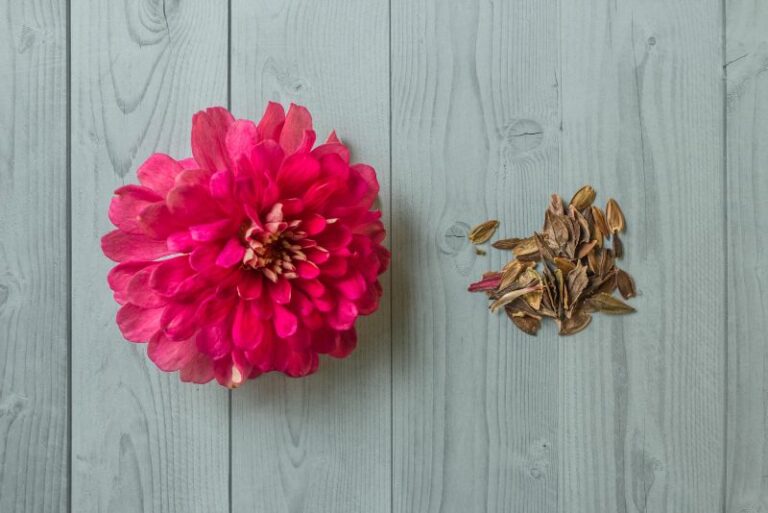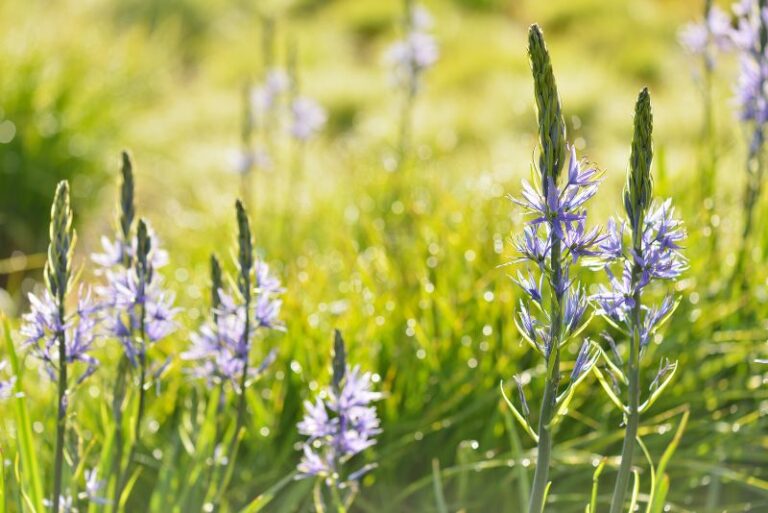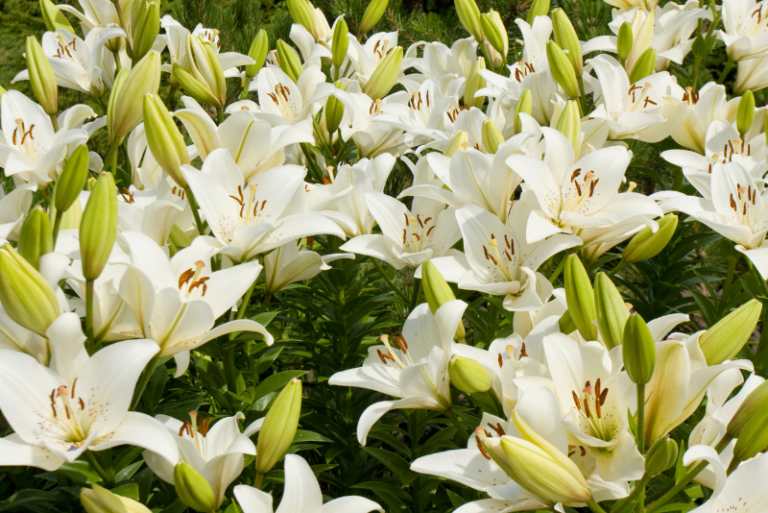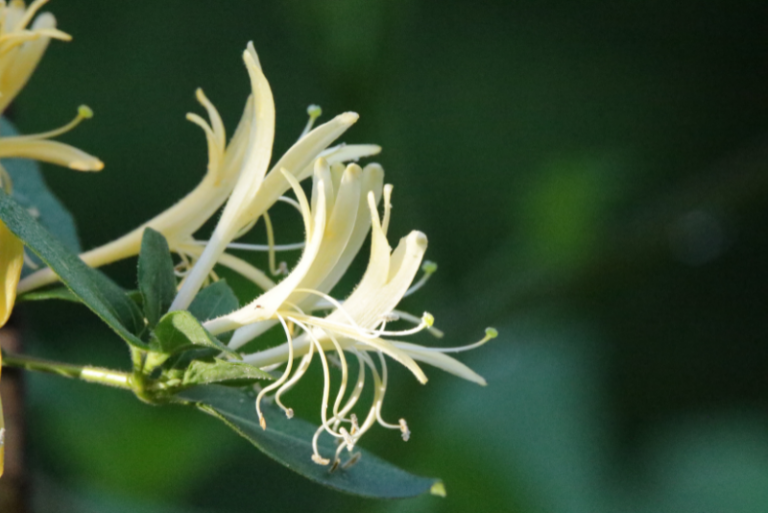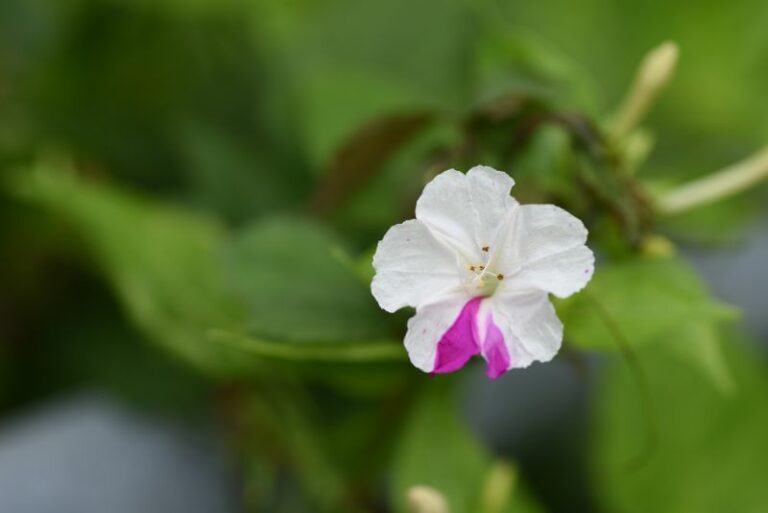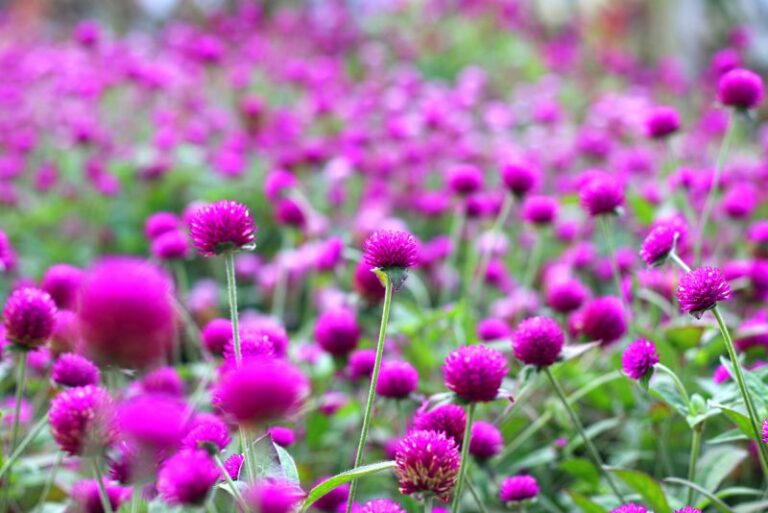How and When To Deadhead Dahlia Flowers in Your Garden
Have you ever found yourself staring wistfully at your drooping dahlia flowers, wishing with all your gardening heart that they could regain their former vibrancy and pops of color?
Fret not, overzealous flower friend, for deadheading is the simple solution to revitalizing your dahlia display! Now I know what you’re thinking – deadheading sounds like a morbid task better suited to a graveyard than a garden. But I assure you that by removing the wilted blooms, you are giving new life rather than enacting floral murder. Think of it as a spa day for your dahlias. A little TLC in the form of deadheading goes a long way in ensuring your dahlias dazzle until the first fall frost.
So grab your pruning shears and read on to discover how and when to spruce up your dahlias with this painless pruning process. Your flowers – and inner horticulturist – will thank you!
Deadhead Dahlia Overview
Here is an overview table for the Dahlia plant, often referred to as “Deadhead Dahlia” due to the common practice of removing spent flowers to encourage further blooming.
| Aspect | Detail |
|---|---|
| Common Name(s) | Dahlia |
| Scientific Name | Dahlia spp. |
| Family | Asteraceae |
| Height | Typically 1-6 feet (0.3-1.8 meters), can vary |
| Light | Full sun |
| Water | Consistent, even moisture; avoid overwatering |
| Soil | Well-drained, fertile loam |
| Fertilizer | Balanced 10-10-10 or low nitrogen formula monthly during growing season |
| Pests and Diseases | Aphids, spider mites, slugs, snails, powdery mildew, viral diseases |
Please note that while this table provides a summary of the Dahlia care, different varieties might have specific needs, and it’s always good to research the particular type of Dahlia you’re growing or consult with a local horticulturist for more precise care information.
All About Deadhead Dahlia

Deadhead Dahlia, also known as Dahlia pinnata, is a perennial plant native to Mexico and Central America. It’s part of the Asteraceae family – the same family as sunflowers, daisies, and asters. The Deadhead Dahlia is well-known for its large, vibrantly colored flowers that bloom in the summer and continue into the autumn.
The size of the plant varies based on the cultivar, with some varieties growing as small as 1-2 feet, while others can reach over 6 feet in height. The flowers themselves can range from 2 inches to over 10 inches in diameter. The color palette is equally diverse, with flowers blossoming in hues of white, pink, red, orange, yellow, and purple.
Deadhead Dahlias prefer well-drained, loamy soil with a slightly acidic to neutral pH. They thrive in sunny locations with moderate temperatures and require regular watering, particularly during dry periods.
One key aspect to maintaining a healthy Deadhead Dahlia is “deadheading,” hence the name. Deadheading is the process of removing withered or spent blossoms. This not only keeps the plant looking tidy but also encourages the growth of new blooms.
Propagation of Deadhead Dahlias can be achieved by seed or by dividing the tuberous roots in the autumn. It’s important to overwinter the divided tubers in a frost-free environment, as the plant is not frost hardy.
Caring for Deadhead Dahlias might require a bit of work, but the reward of their stunning, vibrant blooms is well worth the effort. These plants are a marvelous addition to any garden, bringing a touch of tropical splendor to temperate climates.
In terms of potential issues, Dahlias can be susceptible to pests such as slugs and snails, and diseases like powdery mildew and bacterial wilt. However, with appropriate care and preventive measures, these issues can be effectively managed.
Deadhead Dahlias are not just popular among gardeners, but also hold cultural significance. In Mexico, they’re the national flower, symbolizing elegance, creativity, and the ability to thrive despite adversity.
While the Deadhead Dahlia is an enchanting plant to grow, it’s essential to handle it with care, as all parts are known to be toxic if ingested and can cause skin irritation. Therefore, it’s advisable for garden owners to keep pets and children away from this plant.
Varieties of Deadhead Dahlia
There are about 42 species of Dahlia and an astonishing 20,000 cultivars. Here, we’ll discuss a few of the most popular Deadhead Dahlia varieties:
- Dahlia ‘Bishop of Llandaff’: This variety is one of the most famous and dates back to 1927. It boasts fiery red petals and dark, almost black, foliage. The flowers do not have a significant scent but their dramatic contrast of colors provides an eye-catching spectacle. Despite its distinct look, it shares the same love for well-drained soil and sunny conditions as other Dahlias.
- Dahlia ‘Café Au Lait’: This cultivar has gained popularity for its giant, creamy white to peach-colored blooms. The flowers span up to 10 inches across and fill the air with a sweet, light fragrance. It’s similar to other Dahlias in terms of care and conditions but stands out with its large, soft-colored flowers.
- Dahlia ‘Karma Choc’: This cultivar is known for its deep burgundy, almost chocolate-colored flowers and dark foliage. It’s one of the few Dahlias with a noticeable scent, described as a chocolate aroma. Like other Dahlias, it enjoys sunny locations and needs regular watering.
- Dahlia ‘Moonfire’: Noted for its unusual color combination, this variety exhibits bright orange flowers with yellow centers and deep bronze foliage. It doesn’t have a discernible scent but its vibrant colors make for a striking display. Like all Dahlias, it thrives in a sunny location with well-drained soil.
- Dahlia ‘My Love’: This semi-double Dahlia features pure white petals and a soft, yellow center. While it doesn’t have a noticeable fragrance, its pristine white flowers are a striking sight. It shares similar growing conditions with other Dahlias, preferring sunny spots and well-drained soil.
Each of these Deadhead Dahlia varieties shares the same basic care requirements and potential challenges. They all enjoy a sunny spot, fertile, well-drained soil, and regular watering. Moreover, they all need to be deadheaded regularly to encourage new blooms and maintain a neat appearance. However, each variety brings its unique touch of beauty, setting it apart from the others.
Deadhead Dahlia Care Procedures

At the start of the growing season, it’s important to prepare the soil for your Deadhead Dahlias. This includes tilling, removing weeds and debris, and incorporating organic matter into the soil.
Once planted, keep an eye on the moisture level of the soil and water deeply once a week if there has been no significant rainfall. It’s also essential to mulch
Light and Temperature
Deadhead Dahlias thrive in sunny locations, ideally receiving at least 6-8 hours of direct sunlight each day. They can tolerate partial shade, especially in regions with intense afternoon sun, but too much shade can result in fewer blooms and leggy, weakened stems.
When it comes to temperature, Dahlias prefer moderate conditions, with daytime temperatures between 60-75°F (15-24°C) being ideal. While they can tolerate higher temperatures, consistent watering becomes crucial in these circumstances to prevent wilting and to help the plants maintain their vitality.
In terms of frost, Dahlias are not frost-hardy and must be protected when temperatures start dipping in the fall. The tuberous roots should be dug up after the first frost, cleaned, and stored in a cool, dry place over winter. By taking these seasonal temperature changes into account, you can ensure the health and longevity of your Deadhead Dahlias.
Water and Humidity
Deadhead Dahlias, like most plants, have specific water and humidity needs that help them thrive.
Watering: Dahlias are not drought-tolerant plants and require regular water, especially during dry spells. Aim to water them deeply at least once a week if there is no significant rainfall. However, it’s important to avoid waterlogged soil as this can cause tuber rot. A good practice is to check the top inch of the soil. If it’s dry, it’s time to water. Remember to water at the base of the plant to keep the foliage dry and prevent disease.
Humidity: Dahlias handle a wide range of humidity levels but they tend to struggle in excessively dry or overly humid conditions. In dry climates, mulching can help retain soil moisture and maintain a stable environment for the plant. In contrast, in very humid conditions, ensure the dahlias are planted in a location with good air circulation to reduce the risk of fungal diseases. Regularly check the plants for signs of disease or pests.
Remember that the watering frequency might increase during hot and dry summer months. Also, if the plants are in pots or containers, they’ll require more frequent watering than those planted in the ground. Good drainage is key to prevent water stagnation and the associated problems. By understanding the water and humidity needs of your Deadhead Dahlias, you can provide optimal care and enjoy their stunning bloom display.
Soil Type, pH, and Preparation for Deadhead Dahlias
Deadhead Dahlias are versatile and can thrive in a variety of soil types, provided the soil is well-drained and rich in organic matter. Here’s a guide to understanding their soil and pH requirements, and how to prepare the soil for these striking flowers.
Soil Type: Dahlias prefer loamy soil, which is a balanced mix of sand, silt, and clay. This type of soil offers excellent drainage while providing necessary nutrients and retaining enough moisture for the plants. Sandy soil can also work if it is amended with organic matter to improve water retention. Conversely, clay soil must be amended to enhance drainage as dahlias can experience root rot in waterlogged conditions.
Soil pH: Dahlias prefer slightly acidic to neutral soil, with a pH range of 6.0 to 7.0. This pH level facilitates nutrient absorption, promoting healthy growth and abundant blooms. If your soil is too acidic or alkaline, it can be amended using lime or sulfur respectively to reach the desired pH. Before making any adjustments, conduct a soil pH test using a home testing kit or consult your local extension service.
Soil Preparation: To prepare the soil, start by removing any weeds or debris from the planting area. Till the soil to a depth of about 12 inches to loosen it and make it easier for the dahlias’ tuberous roots to establish. Next, amend the soil with organic matter, such as compost or well-rotted manure. This enhances the soil structure, improves drainage, and provides vital nutrients. Add a balanced slow-release fertilizer to the planting hole following the package instructions to give your dahlias a nutritional boost. After planting your dahlias, mulch the area to retain moisture, suppress weeds, and maintain stable soil temperatures.
By paying careful attention to the soil type, pH, and preparation, you can create an ideal growth environment for your Deadhead Dahlias, helping ensure a vibrant, show-stopping display of blooms.
Fertilizing Deadhead Dahlias
Proper fertilization is crucial to the lush growth and abundant flowering of Deadhead Dahlias. Dahlias are heavy feeders and benefit greatly from regular and balanced nutrition throughout their growing season. Here’s a comprehensive guide on how to fertilize your dahlias for best results.
Choosing the Fertilizer: For dahlias, a balanced, slow-release granular fertilizer is a good choice. A balanced fertilizer has equal proportions of Nitrogen (N), Phosphorus (P), and Potassium (K), typically indicated by a 10-10-10 or 14-14-14 on the package. Nitrogen promotes leafy growth, Phosphorus supports root development and flowering, and Potassium enhances overall plant health.
Feeding Schedule: Begin feeding dahlias when you plant them in the spring. Add the fertilizer to the planting hole to give your dahlias a nutritional head start. After that, a good rule of thumb is to feed dahlias every 3-4 weeks during their growing season, which is typically from late spring to early fall.
Application Method: When fertilizing dahlias, it’s important to avoid direct contact between the fertilizer and the plant stem or tubers to prevent burns. Apply the fertilizer around the base of the plant, following the manufacturer’s instructions for correct quantities. After application, water thoroughly to help the fertilizer seep into the soil and reach the plant’s roots.
Soil Testing: Conducting a soil test once a year is highly recommended. A soil test will reveal the soil’s nutrient content and pH level, and based on this, you can adjust your fertilizing routine if needed. Too much of a certain nutrient can be as harmful as too little.
Complementary Practices: Remember, fertilization is just one part of Dahlia care. Proper watering, soil preparation, light exposure, and regular deadheading go hand in hand with fertilization in ensuring a healthy plant and beautiful blooms.
By following this fertilization guide, you can provide your Deadhead Dahlias with the nutrition they need to produce stunning, showy flowers and a healthy plant structure.
Repotting Deadhead Dahlias
Repotting Deadhead Dahlias is an essential part of their care regimen, ensuring their tuberous roots have ample room to grow and the plant remains vibrant and healthy. Here’s a detailed guide on how to effectively repot these stunning blooms.
1. When to Repot: Dahlias are typically repotted in the spring, when the risk of frost has passed and the plant begins to enter its growth phase. However, if your dahlias are becoming pot-bound or showing signs of stress, they may require repotting at other times.
2. Choose the Right Pot: Select a pot that is larger than the current one by at least 2 inches in diameter. Ensure it has sufficient drainage holes to prevent water-logging.
3. Prepare the Pot: Fill the bottom third of the new pot with a high-quality, well-draining potting mix rich in organic matter.
4. Remove the Dahlia: Gently remove the dahlia from its current pot, taking care to not damage its tuberous roots. Loosen the soil around the root ball with your fingers to remove any compacted soil.
5. Transplant the Dahlia: Place the dahlia in the new pot, ensuring it’s at the same depth as it was in the old pot. Fill the remainder of the pot with the potting mix, pressing lightly to remove any air pockets.
6. Water Thoroughly: After repotting, water your dahlia thoroughly. This helps to settle the soil around the roots and reduces transplant shock.
7. Care After Repotting: Place the repotted Dahlia in a location with plenty of sunlight. Continue with your regular watering, feeding, and deadheading schedule.
Repotting not only gives your Deadhead Dahlias more room to grow but also provides the opportunity to refresh their soil and remove any pests or diseases. With careful execution, repotting will help your dahlias remain healthy and produce an abundance of their iconic vibrant blooms.
Propagating Deadhead Dahlias
Propagation is an excellent way to increase your collection of Deadhead Dahlias without purchasing more plants. Dahlias can be propagated through division, cuttings, or seeds. Each method has its advantages and requirements. Let’s explore them in more detail.
Division:
As mentioned above during repotting, division is a common method of propagation. After removing the dahlia tubers from the ground in late fall, you can divide them into multiple sections, each with at least one “eye” or growth point. It’s essential to let the cut surfaces dry for a few days before replanting to prevent rot. The new plants should bloom by the following summer.
Cuttings:
Cuttings, taken in early spring from new growth, can also be used to propagate dahlias. Choose a healthy stem and cut about 4-6 inches, ensuring there are several sets of leaves on the cutting. Remove the leaves from the bottom half, dip the cut end in rooting hormone, and plant it in a container filled with a well-draining medium. Keep the cutting moist and in indirect light until roots form, usually in 2-3 weeks.
Seeds:
Growing dahlias from seeds is another option, although they may not breed true to the parent plant. Plant the seeds in a seed-starting mix, 1-2 inches apart and 1/4 inch deep. Keep the soil moist and warm. Germination should occur within 1-2 weeks. Once the seedlings have a few sets of true leaves, they can be transplanted to larger containers or the garden.
Remember, propagation is not always successful, and it can take some trial and error. But with patience and care, you can multiply your Deadhead Dahlias and enjoy a glorious display of these vibrant blooms in your garden.
Pruning Deadhead Dahlias
Pruning is a crucial part of Deadhead Dahlia maintenance. It encourages healthy growth, increases flowers’ longevity, and enhances the overall appearance of the plant. Here’s a step-by-step guide to pruning your dahlias effectively.
1. When to Prune: Dahlias should be pruned during their blooming season, typically late spring to early fall. Pruning during this period encourages the plant to produce more blooms.
2. Tools Needed: Ensure you have a pair of sharp, clean shears or secateurs for pruning. Cleanliness is crucial to prevent the spread of diseases between plants.
3. Identify the Stems to Prune: Look for stems that hold spent flowers or appear weak or diseased. These are the stems you’ll want to prune.
4. Make the Cut: Cut the identified stem just above the next set of leaves. Make the cut at a 45-degree angle to prevent water from settling on the cut surface.
5. Deadheading: Deadhead regularly by removing faded or dead flowers. This encourages the plant to produce new blooms rather than diverting energy to seed production.
6. Pinching Back: In early summer, when the plant is about 1.5 feet tall, pinch back the tips of the main stems to encourage branching. This will lead to a bushier plant with more flowers.
7. After Pruning Care: After pruning, make sure to clean up the cut debris from around the plant to discourage disease and pests. Continue with regular watering and fertilization.
Remember, pruning is not just about removing unwanted parts of the plant; it’s also about shaping your dahlias and promoting their overall health. Regularly pruned Deadhead Dahlias reward you with a bounty of lush, vibrant blooms throughout their growing season.
Troubleshooting Deadhead Dahlias
Despite their hardy nature, Deadhead Dahlias can sometimes face issues related to their growth, pests, and diseases. This section will provide a comprehensive guide to identifying and resolving these challenges.
Growing Problems:
- Poor Blooming: The main reason dahlias don’t bloom is inadequate sunlight. Dahlias need at least 6-8 hours of direct sunlight each day. Lack of nutrients, particularly low phosphorus levels, can also impact blooming. Regular feeding with a balanced fertilizer can help.
- Yellowing Leaves: Overwatering or poor drainage often leads to yellowing leaves. Ensure your Dahlia’s soil is well-draining and avoid overwatering.
- Leggy Plants: If your dahlias are growing tall with sparse flowering, it could be due to too much shade or excessive nitrogen in the soil. Try moving them to a sunnier location and refrain from over-fertilizing.
Pests:
- Slugs and Snails: These pests are attracted to the succulent foliage of dahlias. Use slug baits, traps, or diatomaceous earth to control them.
- Aphids: These tiny insects suck sap from the dahlias, causing distorted growth and potentially spreading diseases. Use a strong water spray to dislodge them or introduce beneficial insects like ladybugs.
- Thrips: They cause discolored and distorted flowers. Neem oil or insecticidal soaps can help control thrips.
Diseases:
- Powdery Mildew: This fungal disease appears as a white powdery substance on the leaves. Increase air circulation, avoid overhead watering, and use a fungicide to control it.
- Viral Diseases: Dahlias can be affected by various viral diseases leading to stunted growth and malformed flowers. Unfortunately, there’s no cure for viral diseases. Infected plants should be removed and destroyed to prevent the spread.
- Tuber Rot: This can be caused by fungi or bacteria and leads to the decay of the tubers. Good hygiene, crop rotation, and fungicides can help control this problem.
Remember, the best defense against pests and diseases is good cultural practices. Providing the right growing conditions for your dahlias will keep them strong and healthy, lessening the likelihood of these issues.
Frequently Asked Questions about Deadhead Dahlias
Q1: How often should I water my Deadhead Dahlias?
A: Dahlias generally require moderate watering. However, the frequency would depend on the soil and climate conditions. In most cases, watering once or twice a week should be sufficient.
Q2: Can Deadhead Dahlias grow in pots?
A: Yes, Deadhead Dahlias grow well in containers. Choose a pot that is at least 12 inches in diameter and ensure it has ample drainage holes to prevent waterlogging.
Q3: What type of soil is best for Deadhead Dahlias?
A: Deadhead Dahlias prefer well-drained, rich soil. A good mix would be two parts garden soil to one part compost.
Q4: Why are my Deadhead Dahlia leaves turning brown?
A: Brown leaves could be a sign of underwatering, overwatering, or a disease. Check your watering routine and inspect the plant for any signs of disease.
Q5: Are Deadhead Dahlias deer resistant?
A: Dahlias, in general, are not particularly deer-resistant. However, their height and strong scent often deter deer.
Remember, every garden is unique, and what works well for one gardener may not for another. Trial and error, patience, and observation are key to successful gardening. Enjoy the process, and don’t be afraid to ask for help or advice.

